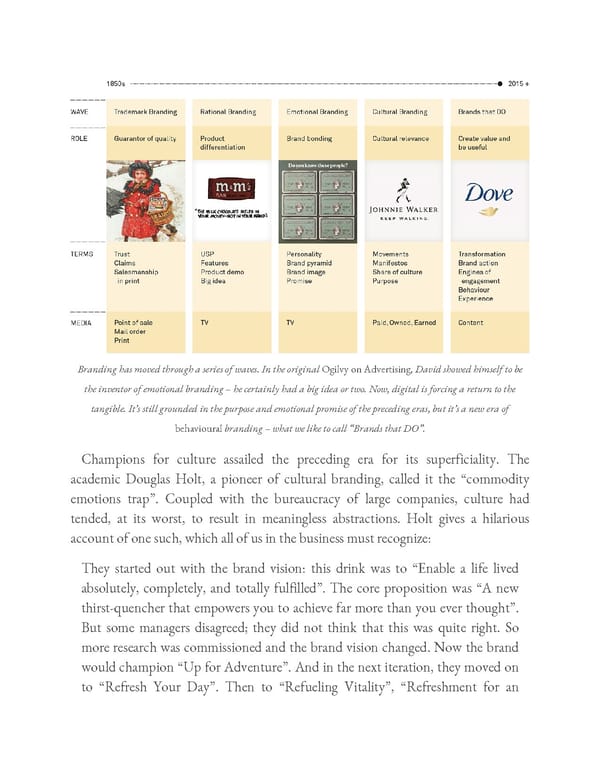Branding has moved through a series of waves. In the original Ogilvy on Advertising, David showed himself to be the inventor of emotional branding – he certainly had a big idea or two. Now, digital is forcing a return to the tangible. It’s still grounded in the purpose and emotional promise of the preceding eras, but it’s a new era of behavioural branding – what we like to call “Brands that DO”. Champions for culture assailed the preceding era for its superficiality. The academic Douglas Holt, a pioneer of cultural branding, called it the “commodity emotions trap”. Coupled with the bureaucracy of large companies, culture had tended, at its worst, to result in meaningless abstractions. Holt gives a hilarious account of one such, which all of us in the business must recognize: They started out with the brand vision: this drink was to “Enable a life lived absolutely, completely, and totally fulfilled”. The core proposition was “A new thirst-quencher that empowers you to achieve far more than you ever thought”. But some managers disagreed; they did not think that this was quite right. So more research was commissioned and the brand vision changed. Now the brand would champion “Up for Adventure”. And in the next iteration, they moved on to “Refresh Your Day”. Then to “Refueling Vitality”, “Refreshment for an
 Ogilvy on Advertising in the Digital Age Page 103 Page 105
Ogilvy on Advertising in the Digital Age Page 103 Page 105